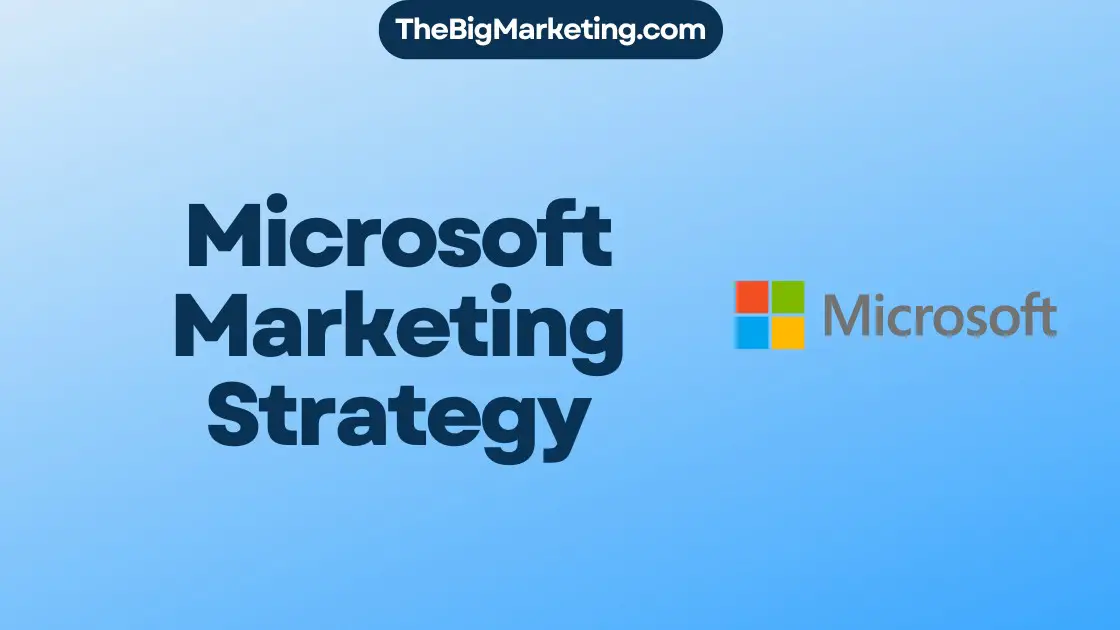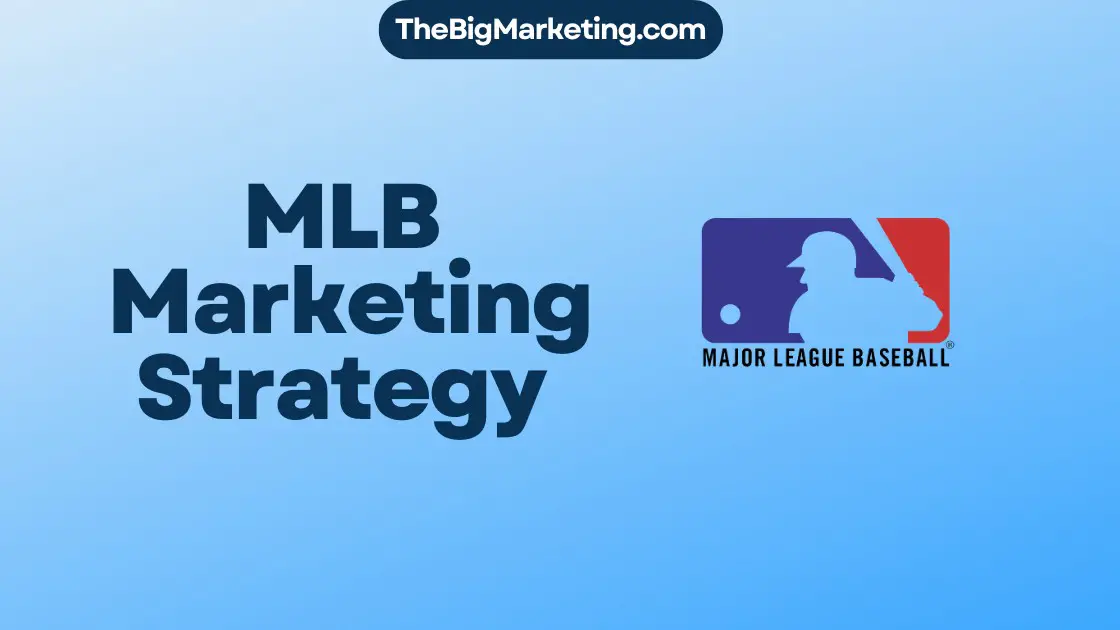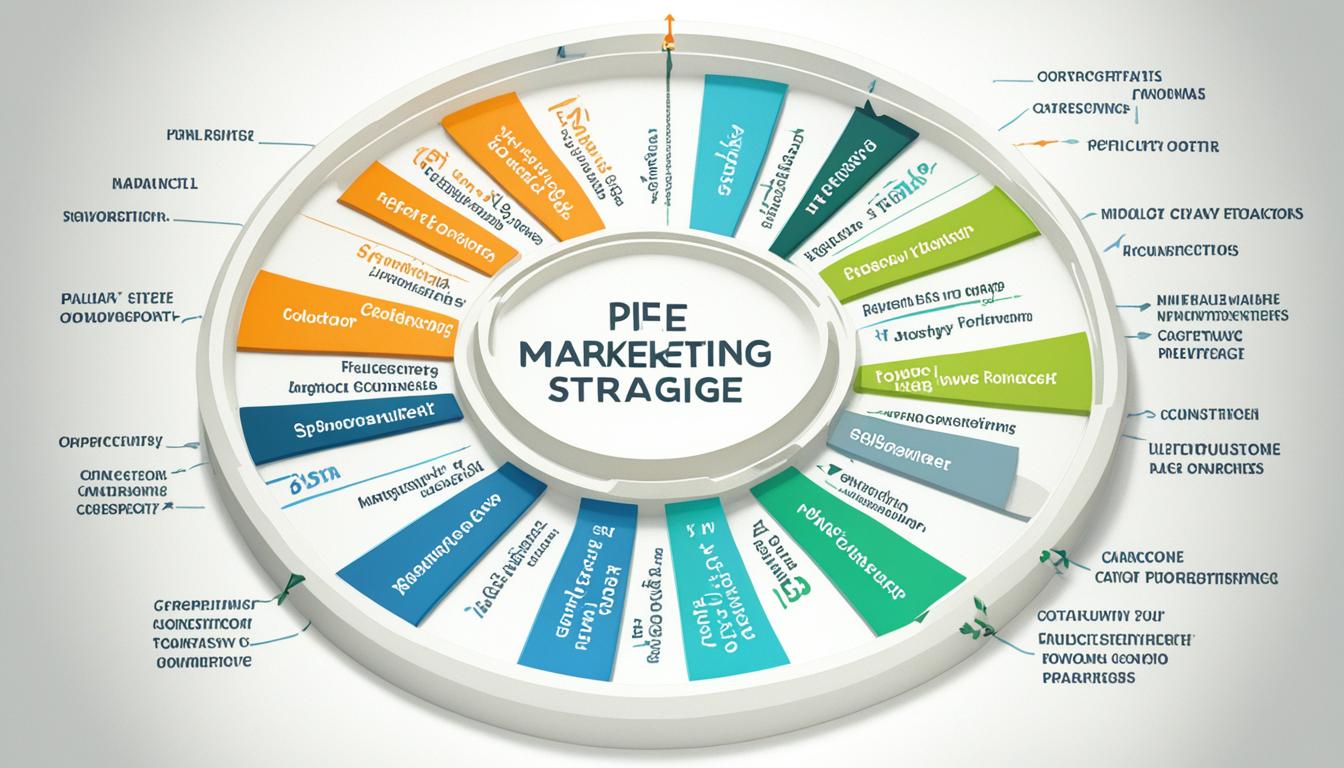Marketing strategies play a vital role in helping businesses achieve their goals. By developing a comprehensive marketing plan, businesses can effectively reach their target audience and drive desired outcomes. In this article, we will explore specific examples of marketing campaigns and strategies that can help businesses succeed in the digital age.
Key Takeaways:
- Marketing strategies are essential for businesses to achieve their objectives.
- A digital marketing strategy focuses on using online channels to attract new customers.
- Marketing campaigns are focused initiatives within a digital marketing strategy.
- Creating a digital marketing strategy involves building buyer personas and setting goals.
- Measuring and optimizing your strategy is crucial for success.
Understanding Marketing Strategy vs. Tactics
A marketing strategy is an essential component of a business plan that sets the overall direction and long-term goals. It involves a thorough analysis of the challenges faced by the business, the formulation of a guiding policy, and the development of targeted actions to accomplish the objectives. Unlike a strategy, marketing tactics are specific actions and methods used to execute the strategy and achieve short-term goals. While a strategy provides the roadmap, tactics focus on the day-to-day execution of the plan.
Marketing strategy involves making important decisions about the target audience, positioning, messaging, and channels to reach potential customers effectively. It considers various factors such as market trends, customer insights, competitive landscape, and available resources. By creating a well-defined strategy, businesses can align their marketing efforts with their overall objectives, optimize resource allocation, and maximize return on investment.
On the other hand, marketing tactics are the actionable steps taken to implement the strategy. These tactics may include activities such as advertising campaigns, email marketing, social media engagement, content creation, search engine optimization (SEO), events, and promotions. The tactics chosen will depend on the target audience, budget, industry, and overall strategy. Through the use of marketing tactics, businesses aim to attract and engage customers, generate leads, increase brand awareness, and drive conversions.
It is important to note that while strategy and tactics are closely related, they serve different purposes in the marketing process. A strategy sets the overall direction and provides the framework for decision-making, while tactics focus on executing the specific actions required to achieve the goals outlined in the strategy. Strategy is the ‘what’ and ‘why,’ while tactics are the ‘how’.
For example, if a company’s marketing strategy is to expand its customer base by targeting a younger demographic, the tactics may involve creating engaging social media content, collaborating with popular influencers, and running online ad campaigns on platforms where the target audience spends most of their time.
By understanding the distinction between marketing strategy and tactics, businesses can develop a comprehensive approach that combines a well-thought-out plan with effective execution. This alignment ensures that marketing efforts are strategic, efficient, and yield the desired results.
Now that we have explored the difference between marketing strategy and tactics, let’s delve into the world of digital marketing strategy and its significance in modern business.
What Is a Digital Marketing Strategy?
A digital marketing strategy is a comprehensive plan designed to utilize online channels effectively in order to achieve specific marketing objectives. By leveraging the power of digital platforms such as organic search, social media, and paid advertising, businesses can establish a strong online presence, increase visibility, attract new customers, and drive traffic to their websites or landing pages.
A successful digital marketing strategy involves carefully selecting the right online channels that align with the overall marketing objectives of the business. It requires a deep understanding of the target audience, their preferences, and the most effective ways to engage with them online.
To illustrate the impact and importance of a digital marketing strategy, consider the following:
| Digital Marketing Strategy | Benefits |
|---|---|
| Organic Search | Improve search engine rankings, increase website traffic, and enhance brand visibility. |
| Social Media | Build brand awareness, engage with the target audience, and foster customer loyalty. |
| Paid Advertising | Drive targeted traffic, increase conversions, and achieve specific marketing objectives. |
A digital marketing strategy enables businesses to leverage online channels to achieve their marketing goals effectively. By implementing a well-defined and integrated plan, businesses can maximize their online presence, connect with their target audience, and drive measurable results.
What Is a Digital Marketing Campaign?
A digital marketing campaign is a focused initiative within a digital marketing strategy that aims to achieve specific objectives. It is a series of actions and tactics that move the business towards a specific end goal. For example, a digital marketing campaign may focus on generating more leads through social media by sharing high-performing content to attract potential customers.
Within a digital marketing campaign, businesses strategically leverage various online channels to reach their target audience and drive desired outcomes. These channels may include:
- Social media platforms such as Facebook, Instagram, and Twitter
- Search engine marketing through platforms like Google Ads
- Email marketing campaigns targeted at specific customer segments
- Content marketing efforts through blog posts, videos, and infographics
The success of a digital marketing campaign lies in its ability to align with the overall marketing strategy and the specific end goal. It requires careful planning, execution, and monitoring to ensure that the desired results are achieved.
When devising a digital marketing campaign, businesses typically follow a structured approach that involves several key steps:
- Defining the objectives: Clearly establish the specific end goal that the campaign aims to achieve. It could be increasing brand awareness, driving website traffic, generating leads, or boosting sales.
- Identifying the target audience: Understand the demographics, interests, and preferences of the target audience to develop tailored marketing messages and select appropriate channels.
- Creating compelling content: Develop engaging content that resonates with the target audience and aligns with the overall marketing message.
- Choosing the right channels: Select the digital channels that are most effective in reaching and engaging the target audience. This may involve a combination of social media platforms, search engines, email marketing, and content distribution networks.
- Implementing and managing the campaign: Execute the campaign by delivering the content through the chosen channels. Monitor its performance, make necessary adjustments, and optimize the campaign based on data and insights.
- Evaluating and measuring results: Analyze the campaign’s effectiveness by tracking key metrics such as website traffic, click-through rates, conversions, and return on investment. Use the insights gained to inform future marketing campaigns.
A successful digital marketing campaign requires a well-defined strategy, thorough market research, creative content creation, and continuous monitoring and optimization. By effectively leveraging digital channels and targeted messaging, businesses can achieve their specific marketing objectives and drive meaningful results.
How to Create a Digital Marketing Strategy
Creating an effective digital marketing strategy is essential for businesses looking to succeed in today’s online landscape. By understanding your target audience, setting clear goals, and utilizing the right tools and channels, you can build a strategy that drives results. Here are the key steps to follow:
1. Build Buyer Personas
Start by identifying and understanding your target audience through the creation of detailed buyer personas. These personas represent your ideal customers and help you tailor your marketing efforts to their specific needs, challenges, and interests. Conduct thorough research and gather real data to inform your understanding of their demographics, preferences, and behaviors.
2. Set Goals
Outline clear and measurable marketing goals that align with your overall business objectives. Your goals should be specific, attainable, relevant, and time-bound. Examples include increasing website traffic, generating leads, boosting brand awareness, or driving sales. Setting goals provides direction and helps you track the success of your digital marketing strategy.
3. Evaluate Existing Digital Channels and Assets
Assess your current digital channels and assets, such as your website, social media platforms, email marketing lists, and online advertising accounts. Determine which channels and assets are performing well and which ones need improvement. This evaluation will help you identify areas where you can leverage your existing resources and where you may need to invest further.
4. Select the Right Digital Marketing Tools
Choose the appropriate digital marketing tools and technologies that align with your goals and target audience. These tools may include analytics platforms, marketing automation software, content management systems, social media management tools, and email marketing platforms. The right tools will help you streamline your marketing efforts and measure the effectiveness of your campaigns.
5. Develop a Content Strategy
Create a content strategy that aligns with your target audience’s needs and preferences. Identify the types of content that resonate with your audience, such as blog posts, videos, infographics, or podcasts. Plan your content calendar, including topics, formats, and distribution channels. A well-planned content strategy ensures consistency and relevance across all your digital marketing channels.
6. Craft Compelling Messaging
Create compelling messaging that speaks directly to your target audience’s pain points and motivations. Your messages should clearly communicate the unique value proposition of your products or services. Develop a consistent brand voice and tone that resonates with your audience and reflects your brand’s personality and values.
7. Implement and Monitor
Once your strategy is in place, implement your digital marketing campaigns across the chosen channels. Monitor and track the performance of your campaigns using relevant metrics and analytics. This data will provide insights into what is working well and where adjustments may be needed to optimize your efforts.
8. Continuously Optimize
Regularly review and optimize your digital marketing strategy based on the data and insights gathered. Analyze the performance of individual campaigns, test different tactics, and make data-driven decisions to improve your results. Optimization is an ongoing process that ensures your strategy remains effective in a constantly evolving digital landscape.
9. Measure Return on Investment (ROI)
Measure the return on investment (ROI) of your digital marketing efforts by analyzing the impact on your business’s bottom line. Track key performance indicators (KPIs) such as leads generated, conversion rates, customer acquisition costs, and revenue generated. This analysis will help you determine the success of your strategy and make informed decisions moving forward.
By following these steps, you can create a comprehensive digital marketing strategy that effectively reaches and engages your target audience, drives meaningful results, and helps your business achieve its goals.
Allocate Budget and Resources
Effective allocation of budget and resources is crucial for the success of your integrated marketing campaigns. By carefully considering the size of your business, the scope of your campaigns, and your team’s capabilities, you can ensure that you maximize the impact of your marketing efforts.
Start by creating a budget spreadsheet that allows you to track your expenses and allocate funds for each campaign. This will help you stay organized and ensure that you have a clear overview of your financial resources.
When allocating your budget, it’s important to prioritize the most effective marketing channels for your target audience. Conduct thorough research to identify which channels are most likely to reach your desired audience and generate the highest ROI.
Remember to allocate contingency funds to account for unexpected expenses or emergent opportunities. This will help you adapt to unforeseen circumstances and take advantage of new marketing possibilities without compromising your overall budget.
Regularly review and adjust your budget based on the performance data and ROI of different activities and campaigns. Analyze the impact of each marketing initiative, identify areas for improvement, and reallocate resources accordingly. By constantly optimizing and fine-tuning your budget allocation, you can ensure that your marketing efforts are aligned with your business goals and yielding the best possible results.
| Budget Allocation Tips |
|---|
| 1. Understand your business goals and allocate budget accordingly. |
| 2. Prioritize marketing channels that resonate with your target audience. |
| 3. Allocate contingency funds for unexpected expenses or opportunities. |
| 4. Regularly review and adjust your budget based on performance data. |
| 5. Optimize and fine-tune your budget allocation to maximize ROI. |
Unified Brand Messaging and Assets
Deliver a consistent brand message across all channels to enhance brand recall and build trust. A cohesive brand message is crucial for establishing a strong connection with your target audience and differentiating your brand from competitors.
A key component of brand messaging is developing a brand voice guide that defines your brand’s tone, style, and language. This guide ensures that all written and spoken communication reflects your brand values and personality. It helps create a uniform experience across various touchpoints, reinforcing brand recognition and loyalty.
Brand assets, such as logos, color schemes, and typography, play a vital role in supporting your brand message. They visually represent your brand and evoke certain emotions and associations. When designing brand assets, consider how they align with your brand values and reinforce your desired message.
Integrating your brand messaging and assets into all your marketing materials is essential for creating a cohesive and impactful brand experience. Whether it’s your website, social media posts, email campaigns, or advertisements, ensure that they consistently reflect your brand’s voice and visuals.
Benefits of Unified Brand Messaging and Assets:
- Increases brand recognition and recall
- Builds trust and credibility with your target audience
- Creates a sense of consistency and reliability
- Establishes a clear and differentiated brand identity
- Enhances the overall brand experience for customers
Incorporating a cohesive brand message and assets in your marketing efforts strengthens your overall brand presence and fosters a lasting connection with your audience. By consistently delivering a unified brand experience, you can position your brand as trustworthy, memorable, and relevant.
| Key Elements of Unified Brand Messaging and Assets | Examples |
|---|---|
| Brand Voice Guide | A detailed document outlining brand tone, style, and language. It provides guidelines for content creation and ensures consistency in messaging across different platforms. |
| Logo | A visual representation of your brand. It should capture your brand’s essence and be consistently used across all platforms and marketing materials. |
| Color Scheme | A selection of colors that represents your brand. Consistently using these colors creates visual coherence and helps establish brand recognition. |
| Typography | A set of fonts or typefaces that reflect your brand’s personality. Consistent typography adds visual appeal and reinforces brand consistency. |
Central Theme for Integrated Marketing Strategy
Creating a central theme is crucial for an integrated marketing strategy that delivers a cohesive narrative and maximizes the impact of your campaigns. The central theme acts as the guiding force behind all your marketing materials, tying them together and ensuring a consistent message across different channels. It reflects your brand’s mission and the specific problems you solve for your audience, allowing for a more memorable and relatable brand experience.
When choosing a central theme, consider the overall objectives of your integrated marketing campaigns. Think about the key message you want to communicate and how it aligns with your target audience’s needs and aspirations. A well-crafted central theme will resonate with your audience and connect with their emotions, making your brand more relatable and memorable.
Integrate the central theme into all aspects of your marketing materials, including social media posts, email campaigns, landing pages, and advertisements. Ensure that every piece of content reinforces the central idea and contributes to the cohesive narrative. This consistency helps build brand recognition and reinforces the central theme in the minds of your audience.
By maintaining a central theme throughout your integrated marketing strategy, you enhance the effectiveness of your campaigns, reinforce your brand message, and create a cohesive and impactful brand experience for your audience.
Target Audience and Buyer Personas
When developing a digital marketing strategy, it is crucial to have a clear understanding of your target audience and create detailed buyer personas. By defining your target audience, you can tailor your marketing messages to resonate with their needs and preferences, resulting in more compelling and effective campaigns.
One way to gather valuable insights about your audience is by analyzing existing customer data. By examining demographic information, browsing behavior, and purchase history, you can gain a deeper understanding of who your customers are and what motivates them.
To supplement your existing data, conducting audience research is essential. This involves surveys, focus groups, and interviews to gather information about your audience’s goals, challenges, and interests. By obtaining qualitative data directly from your audience, you can better align your marketing efforts with their needs.
Tools like Google Analytics and One2Target can provide valuable quantitative data about your audience’s online behavior. These tools offer insights into website traffic, user demographics, and user engagement metrics, helping you refine your target audience and buyer personas.
With accurate and detailed buyer personas in hand, you can craft marketing messages that speak directly to the unique needs and desires of your audience segments. Buyer personas represent fictional characters who embody the characteristics and behaviors of your target audience. They provide a clear picture of your audience’s preferences, enabling you to develop relevant content and tailor your digital marketing strategy accordingly.
Example Buyer Persona
| Demographics | Goals | Challenges | Interests |
|---|---|---|---|
| Age: 25-34 Gender: Female Location: Urban Income: $50,000-$75,000 |
Advance in her career Improve work-life balance Invest in self-development |
Limited time for personal activities Balancing work and personal commitments |
Fitness and wellness Personal growth and self-improvement Travel and adventure |
Competitive Analysis
When it comes to marketing strategies, keeping an eye on your competitors is crucial for staying ahead in the game. Conducting a competitive analysis allows you to gain insights into the strategies and tactics that are working well in your industry. By understanding what your competitors are doing, you can adapt their successful approaches and identify areas where you can differentiate yourself.
Identify Your Top Competitors
The first step in competitive analysis is to identify your top competitors. These are the businesses that you directly compete with for your target audience and market share. Look at companies that offer similar products or services and operate in the same geographical area. Once you have a list of competitors, analyze their online presence and marketing efforts.
Analyze Website Traffic
One important aspect to consider is website traffic. Analyze your competitors’ websites using tools like Market Explorer and Traffic Analytics. These tools provide valuable data, such as the number of visitors, engagement metrics, and sources of traffic. By understanding your competitors’ website performance, you can identify potential opportunities to improve your own website and attract more visitors.
Assess Social Media Activities
Social media is another area to focus on during competitive analysis. Look at your competitors’ social media profiles and analyze their activities. Take note of the platforms they are active on, the type of content they share, and the engagement they receive from their audience. This can help you understand which social media channels are most effective in reaching your target audience and what types of content resonate with them.
Evaluate Content Strategies
Content plays a crucial role in marketing strategies. Analyze the content produced by your competitors, such as blog posts, videos, and infographics. Look for patterns in their content strategies—what topics they cover, how often they publish, and the engagement they receive. This will help you identify gaps in the market and opportunities to create unique, valuable content that sets you apart from your competitors.
Understand Target Audience and Effective Messaging
During competitive analysis, pay attention to your competitors’ target audience and messaging. Determine who they are targeting and how they are communicating with them. Assess the language, tone, and style used in their marketing materials. This will not only give you insights into the shared audience overlap but also allow you to fine-tune your own messaging to resonate with your target audience effectively.
Gather Insights into Marketing Channels
Lastly, analyze the marketing channels your competitors are using. Are they active on social media, email marketing, or paid advertising platforms? Identify their most successful channels and see if there are any opportunities for you to optimize your own marketing efforts. Uncover what marketing strategies are resonating with your shared audience and determine where you should invest your resources for maximum impact.
By conducting a thorough competitive analysis, you can gain valuable insights into your industry, target audience, and effective marketing strategies. Use these insights to refine your own marketing approach, differentiate yourself from competitors, and ultimately achieve your marketing objectives.
| Competitor | Website Traffic | Social Media Engagement | Content Strategy | Messaging & Target Audience | Marketing Channels |
|---|---|---|---|---|---|
| Competitor A | 500,000 monthly visitors | High engagement on Facebook and LinkedIn | Frequent blog posts and videos | Messaging tailored to young professionals | Active on Facebook and Instagram |
| Competitor B | 250,000 monthly visitors | Large following on Twitter and Instagram | Infographics and case studies | Messaging focused on cost-saving solutions | Active on Twitter and LinkedIn |
| Competitor C | 1,000,000 monthly visitors | Engaged community on YouTube and Pinterest | Podcasts and webinars | Messaging tailored to small business owners | Active on YouTube and Pinterest |
Measure and Optimize Your Strategy
Continuously measure the success of your digital marketing strategy by tracking key performance indicators (KPIs). By analyzing relevant data, you can effectively measure the impact of your strategy and make data-driven decisions to optimize your digital marketing efforts.
One valuable tool for measuring and analyzing data is HubSpot’s Reporting Dashboard. This comprehensive platform consolidates your marketing and sales data, providing you with valuable insights into what works and what doesn’t.
With HubSpot’s Reporting Dashboard, you can track KPIs such as website traffic, conversion rates, email open rates, social media engagement, and more. By regularly reviewing these metrics, you can identify trends, successes, and areas for improvement within your digital marketing strategy.
Optimizing your strategy based on data analysis allows you to make informed adjustments to improve your results. By focusing on the tactics that have proven successful and adjusting or eliminating ineffective ones, you can enhance the overall effectiveness of your digital marketing campaigns.
It’s important to regularly review and refine your tactics to ensure your marketing efforts are aligned with your objectives. Stay up to date with the latest digital marketing trends, consumer behavior, and industry best practices. By staying agile and adaptable, you can continually optimize your strategy to meet the evolving needs and preferences of your target audience.
Remember, data analysis and optimization are ongoing processes. Continuously monitor and evaluate your digital marketing efforts, and be prepared to make data-driven adjustments as necessary. By consistently measuring, optimizing, and refining your strategy, you can maximize the success of your digital marketing initiatives and achieve your marketing goals.
See the table below for an example of key performance indicators (KPIs) you may want to track:
| KPI | Description |
|---|---|
| Website Traffic | The total number of visitors to your website over a specific time period. This can include new and returning visitors. |
| Conversion Rate | The percentage of website visitors who complete a desired action, such as making a purchase, filling out a form, or subscribing to your newsletter. |
| Email Open Rate | The percentage of recipients who open your marketing emails. This metric helps determine the effectiveness of your subject lines and overall email marketing strategy. |
| Social Media Engagement | The level of interaction and engagement your social media posts receive, including likes, comments, shares, and clicks. |
| Cost Per Lead | The average amount of money spent to acquire a single lead. This metric helps assess the efficiency and cost-effectiveness of your digital marketing campaigns. |
Tracking these KPIs and others relevant to your business will provide valuable insights into the effectiveness of your digital marketing strategy. Use this data to continuously optimize your approach, maximize your return on investment, and drive the success of your digital marketing efforts.
Conclusion
Implementing a well-planned and executed marketing strategy is crucial for businesses to achieve their marketing objectives and reach their target audience. By employing a combination of marketing strategies, including digital advertising, social media marketing, and traditional marketing approaches, businesses can effectively promote their products or services and increase brand visibility.
Understanding the differences between strategy and tactics is key to developing a successful marketing plan. While a marketing strategy sets the overall direction and long-term goals, tactics are the specific actions and methods used to execute the strategy and achieve short-term objectives. By aligning their tactics with their overall marketing strategy, businesses can ensure a cohesive and impactful marketing campaign.
Continuous optimization and data analysis are essential for the success of any marketing strategy. By regularly measuring key performance indicators and analyzing data, businesses can identify what works and what doesn’t, allowing them to refine their tactics and improve their results over time. This iterative approach to marketing optimization ensures that businesses stay competitive in the ever-evolving marketplace.
In conclusion, marketing examples and strategies, along with digital advertising, have the power to propel businesses forward and help them achieve their marketing goals. By taking a holistic approach to marketing and understanding their target audience, businesses can create impactful campaigns that resonate with their customers, drive engagement, and ultimately lead to increased revenue and growth.





